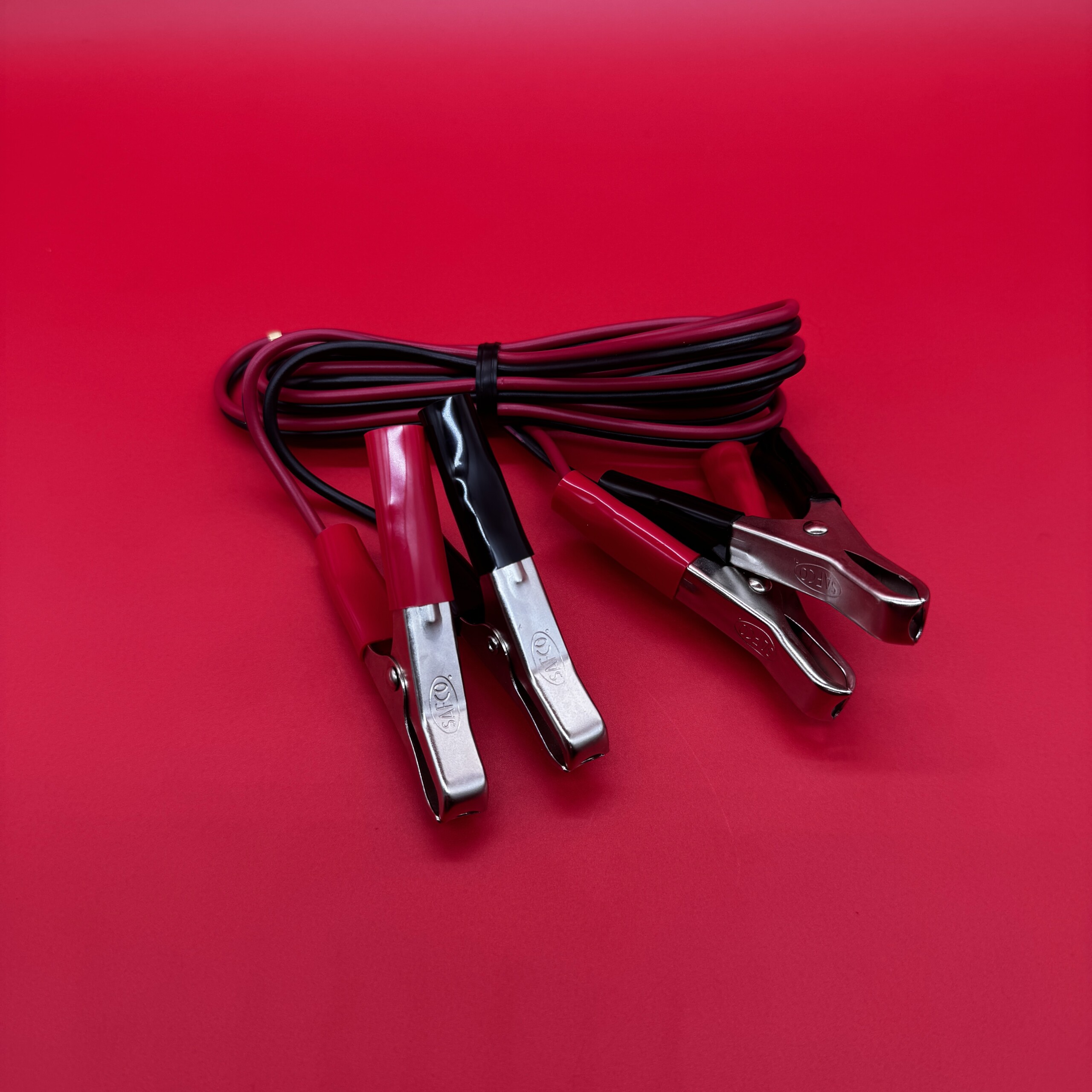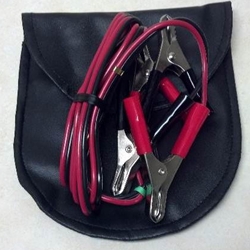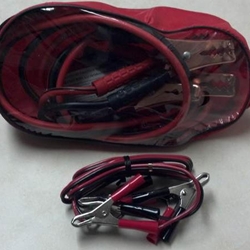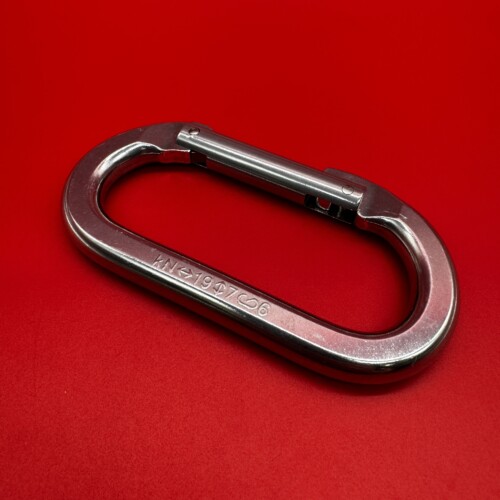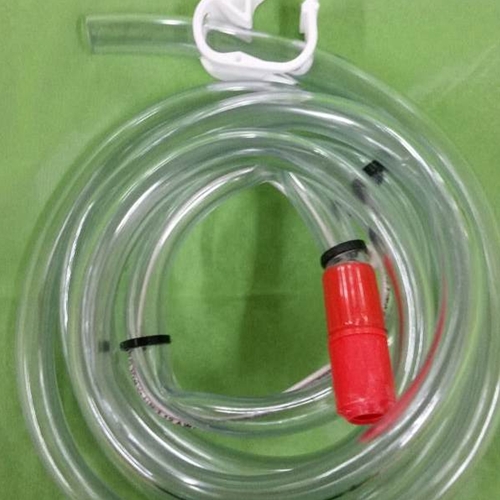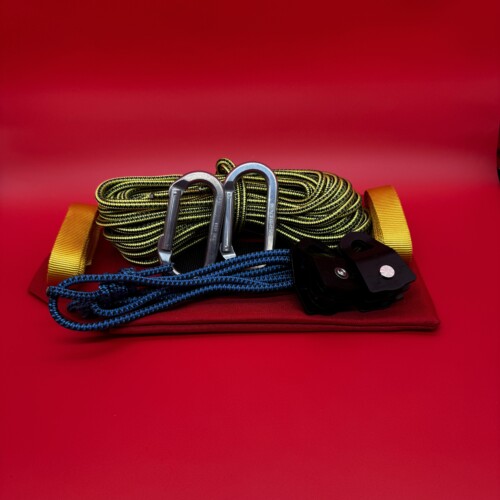Description
Jumper cables. Love ’em, hate ’em. Everyone’s used them to start a car and a few of us have used them to start our motorcycle.
Sure, you can buy a set of jumper cables at any auto/hardware store, but they’re way too big and too heavy to carry on the bike. For motorcycle applications you want something smaller, something lighter, something you can throw in the saddlebag.
Top photo shows a typical “compact” automotive jumper cable, and the BestRest jumper cable. Which one would you rather carry? The 3-pound set at top? Or the 9-ounce set below?
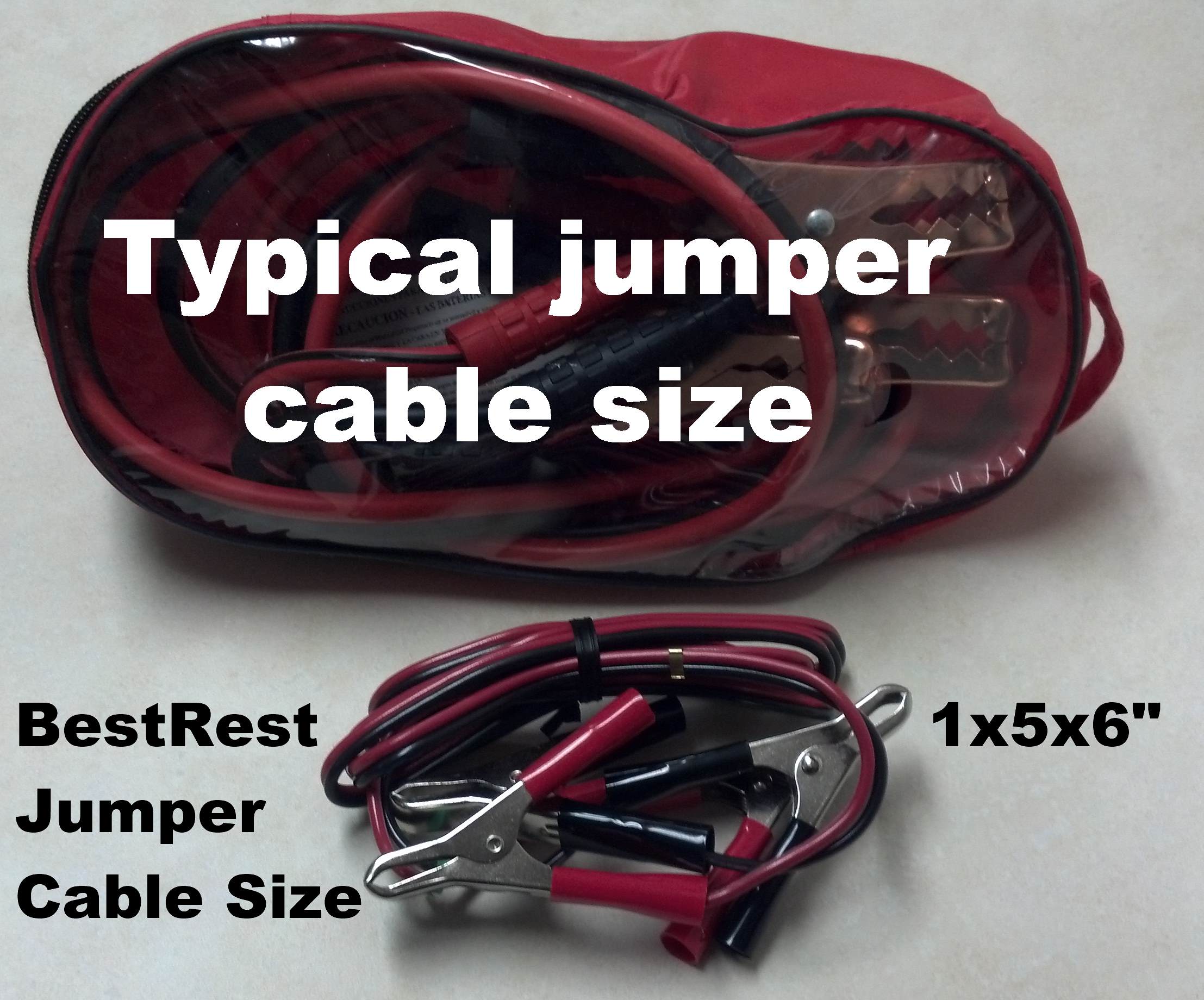
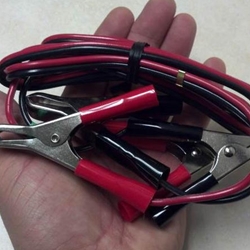
Fits in the palm of your hand. Stores in a small vinyl pouch.
Specs:
- 6-ft long – easily fits between 2 motorcycles
- 12-gauge color coded wires
- Color coded heavy duty clamps
- Weighs only 9 ounces
- Measures 1″ x 5″ x 6″
- Vinyl storage pouch included
These cables have been field tested for occasional motorcycle use. The heavy duty 12-gauge wire easily handles the amperage needed for a motorcycle jump-start.
Motorcycle electrical systems are fragile so when you do use jumper cables follow these rules:
- Don’t get in a hurry. Take your time. Work carefully.
- Don’t connect to any wires that are part of the bike’s wiring harness.
- Instead, connect directly to the terminals of the battery.
- On the vehicle that’s providing the power, turn the motor OFF
- After connecting the cables, give the battery 4-5 minutes to charge itself.
- Don’t run your bike’s starter motor for longer than 5-10 seconds.
- If the bike doesn’t start right away, let the battery charge again for a few minutes.
Hopefully you’ll never need to use these jumper cables. But when you do need ’em they’re worth their weight in gold.

